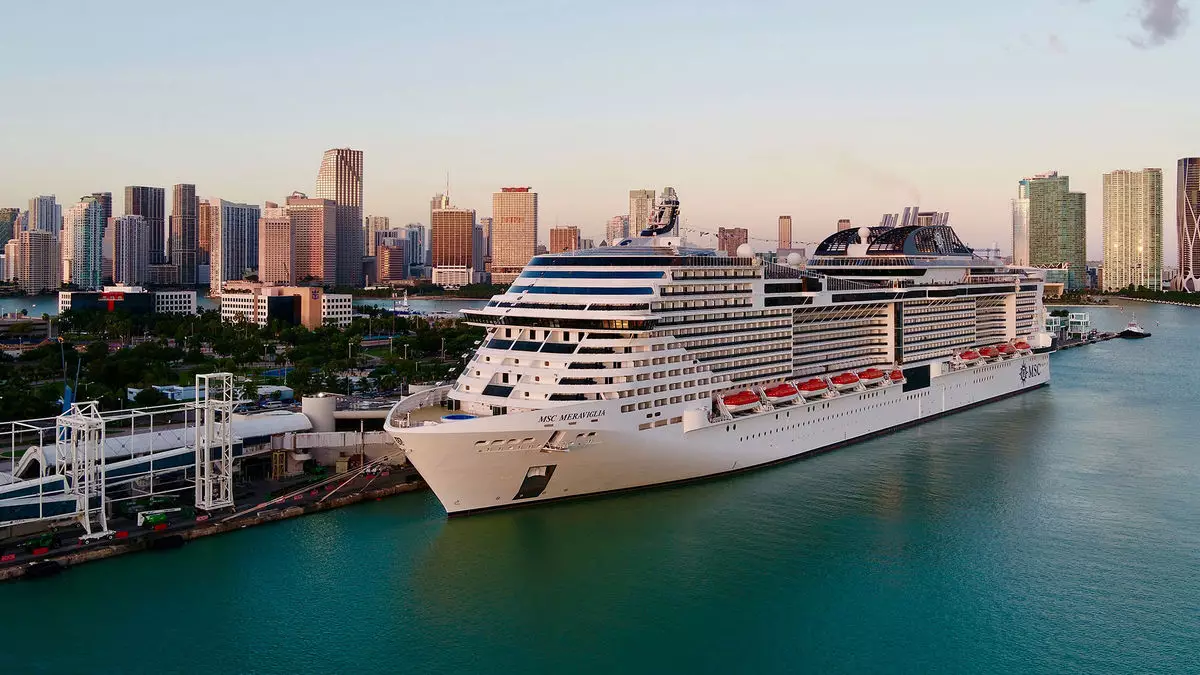The cruise industry is no stranger to dynamic shifts, but MSC Cruises’ decision to relocate the Meraviglia from New York City to Miami marks a decisive move that exemplifies strategic adaptation. While many will view this as simply a seasonal change, it reveals a deeper understanding of market trends, passenger preferences, and operational efficiencies. Moving a flagship ship from a historic port like Brooklyn to the vibrant metropolis of Miami signals a confidence in the southeastern U.S. as a hub of Caribbean exploration. It also signifies MSC’s intent to capitalize on Miami’s established status as the cruise capital of the world, where year-round demand and infrastructure create an advantageous environment for growth.
This repositioning isn’t arbitrary; it is clearly driven by a desire to optimize the cruise line’s global deployment and tap into burgeoning travel demands from North American travelers. The decision to reassign multiple ships to Miami for the upcoming winter season demonstrates a calculated effort to strengthen MSC’s presence in a market that is increasingly competitive, with Royal Caribbean and Carnival also expanding their Caribbean offerings. By consolidating operations in Miami, MSC can streamline logistics, reduce operational costs, and attract a broader base of cruisers eager for year-round Caribbean adventures.
Strategic Expansion of Caribbean Offerings and Destinations
The move also underscores MSC’s aggressive push into the Caribbean sector, enhancing its portfolio of destinations and excursions. The company’s plan to operate four ships out of Miami during winter 2026-27, up from three this winter, signals a significant commitment to this region. Notably, MSC will double down on calls to popular ports like Amber Cove and Grand Turk, but also venture into less frequented destinations, increasing exposure and providing passengers with more diverse cultural experiences.
The itinerary diversity holds tremendous appeal. The eight-night Caribbean cruise, for instance, offers guests a variety of ports—ranging from the historical streets of San Juan to the natural beauty of St. Kitts and St. Maarten. Meanwhile, the six-night cruises to Ocean Cay and Nassau provide quick escapes that cater to a broader demographic, including families, couples, and solo travelers seeking convenience and variety. These expanded offerings speak to MSC’s broader strategy of blending luxury, adventure, and affordability, tailored to the evolving preferences of modern travelers.
A Reflection of Industry Evolution and Customer Expectations
MSC’s reshuffling reflects an industry that is increasingly prioritizing flexibility, regional strength, and destination diversity. It also raises questions about the future of traditional cruise hubs and the shifting epicenters of maritime tourism. The move suggests that lucrative seasonal markets like New York, with its high operational costs and busy scheduling, may be losing ground to more centralized and efficient hubs like Miami.
Furthermore, this repositioning indicates MSC’s understanding that modern cruisers seek seamless experiences, often favoring convenience and variety over the nostalgia of traditional ports. The shift to Miami, with its year-round appeal and proximity to the Caribbean, is a calculated effort to meet these changing expectations head-on. It’s a bold statement about where the cruise industry is heading: adaptable, destination-centric, and ever-innovative in response to a global travel landscape that demands agility and strategic foresight.


Leave a Reply